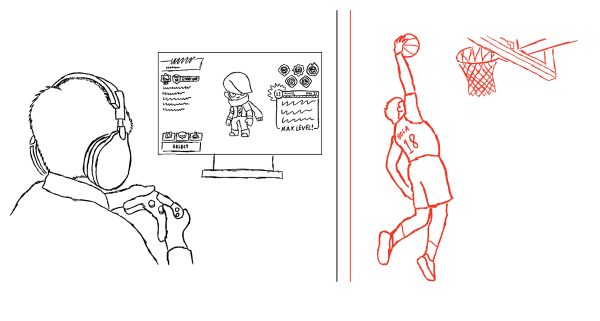Indoctrination at young age inhibits religious diversity
Mrs. Perez leads theology class
Indoctrination is one of the most powerful weapons that mankind has created. It can be used to hide the truth and foster belief in false ideas. We like to think that indoctrination is a thing of the past, or that it’s only utilized by dictators in far away countries. However, indoctrination exists in our everyday lives. It comes in many forms, one of the most dangerous and widespread being religious indoctrination.
Statistics prove the existence and effectiveness of this indoctrination. One principal example is Christianity. According to a study by the Pew Research Center, only 22.4% of adults raised as a Christian changed to a different belief. This means a total of 77.6% of those raised as Christians stay Christian and only 4.2% adopt the belief later in life. The low amount of those who joined after childhood and the somewhat low amount of those who leave suggest the belief system does not entice most who were not born into it, but does keep those who were raised by it. The only system defying these statistics is Atheism, Agnosticism, and other “unaffiliated” groups. Of those raised unaffiliated, only 52.3% stayed unaffiliated into adulthood. This is likely due to the neutrality of Agnosticism and its lack of a defining and confining belief system. These statistics prove early indoctrination is having a major impact on many belief systems, but why does what people believe matter?
It’s not a matter of what they believe. It’s a matter of ensuring that they have the ability to choose their beliefs. On top of this, indoctrination has effects on children’s ability to rationally think. A study by the Cognitive Science Society found that churchgoing children (ages 5-6) had a much higher chance of believing that various fantasy stories were true. Children who attend a parochial school were about twice as likely to believe the fantasy story, even if they weren’t religious. Another study by Pew Research Center tested people of different religions on their knowledge of varying religions. Atheists and Agnostics scored highest, followed by Jews, Protestants, and Catholics. This shows that some religions lack in-depth knowledge of other religions, while a select few have extensive knowledge of other faiths. This furthermore suggests that some religions tend to stick to their own religion instead of testing their beliefs by researching alternative belief systems.
It is undeniable that enforcing religion has significant effects on a young person’s ability to think. Those in agreement with this idea may choose to raise their kids in an Atheist environment. However, Atheism can still lead to bias, and avoidance of religion can lead to ignorance. The best way is to teach your children about religions and let them develop their own opinions. Once they have developed the ability to reason,which occurs around the age of 7, it can be beneficial to teach a religion in-depth. Then one can educate about broader aspects of religions of the world.
These problems do not stop at religion. Parents often raise their children to adopt their same beliefs. However, religious indoctrination has wide-reaching effects on a person, making it more dangerous than other forms of indoctrination. I’ll end this with a challenge: learn about a religion you didn’t know about before. You never know how it might impact your current beliefs.
Your donation will support the student journalists of Saint Viator High School. Your contribution will allow us to purchase equipment and cover our annual website hosting costs.








